Mumbai, formerly known as Bombay, is located on the western coast of Maharashtra, a state known for its geographical diversity. The culinary traditions of Maharashtra are categorized into two distinct styles: the coastal (Konkani) and the inland (Varadi), embracing flavors from Pune, Nashik, and Kolhapur areas.
The culinary palette of Maharashtrian cuisine spans a spectrum from mild spicy to intensely spicy flavors. Among its diverse community, Brahmins and Varkaris adhere to a lacto-vegetarian diet. Essential ingredients in this cuisine consist of wheat, rice, jowar (sorghum), bajra, various lentils, and vegetables. Nuts like peanuts and cashews are also used frequently. Common spices used daily are turmeric, asafoetida, coriander, cumin, red chili seeds, and mustard seeds.
Maharashtrian cuisine features a distinctive spice mix known as goda masala, made from coriander seeds, cumin, sesame seeds, cinnamon, cloves, bay leaves, and dried coconut. This medley of spices is incorporated into a variety of vegetable dishes, lentils, and rice dishes.
In the Konkan coastal area, Maharashtrian cuisine presents a wide selection of seafood dishes. Key ingredients consist of coconut, rice, dairy products, and kokum. Konkani cuisine is known for its harmonious mix of sweet, sour, and spicy taste.
Maharashtrian cuisine is very popular for its delicious street food, which is an important part of the food culture in Maharashtra, especially in the capital, Mumbai. In Mumbai, people from all walks of life prefer street food from roadside vendors rather than dining at a restaurant.
In Maharashtrian cuisine, it is common for meals to be served on a thali. Vegetables and curries are usually served inside of the thali whereas pickles, condiments, and side dishes are placed on the edge of the thali.
Let’s dive in and look at some of the dishes that Maharashtrian cuisine has to offer:
1. Pav Bhaji
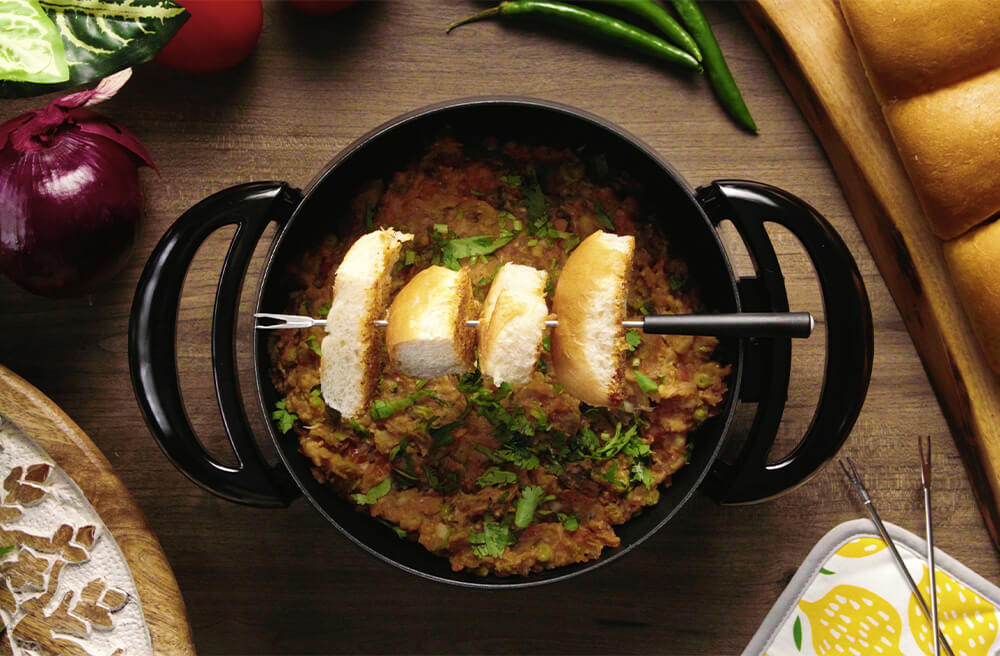
Regarded as the king of street food in India, Pav Bhaji is a savory mix of mashed vegetable curry featuring potatoes, onions, carrots, peas, bell peppers, tomatoes, and a medley of spices. Typically prepared on a large grill, this curry is accompanied by warm, buttery bread toasted on a pan, alongside onions and a wedge of lime for garnish. Unlike other street foods, Pav Bhaji is a wholesome and filling meal.
2. Vada Pav
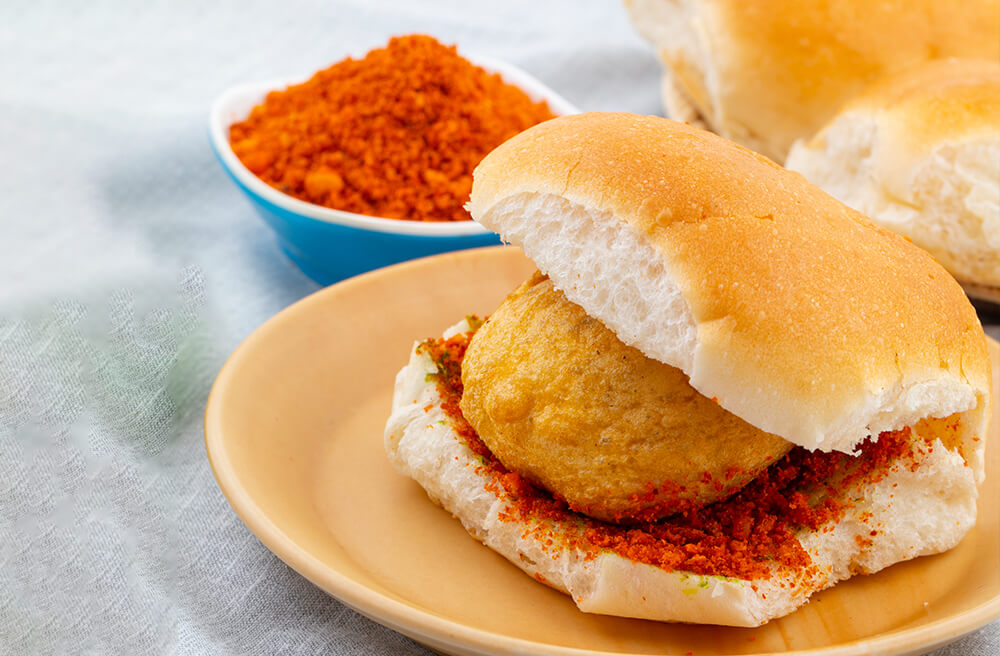
Vada Pav is another iconic street food, deeply embedded in the region’s culinary heritage. Vada pav is the Indian version of a burger. It consists of a deep-fried potato fritter nestled within a lightly toasted bun. This beloved snack is typically served with an array of condiments, including mint chutney, garlic chutney, tamarind chutney, and salted green chilies, enriching its flavors and making it a staple of the state’s food culture.
3. Varan Bhat

Varan Bhat stands as a quintessential comfort food and a daily staple. Varan, a lentil soup made from pigeon pea lentils, is cooked until tender and then flavored with a tempering (tadka) that includes mustard seeds, cumin seeds, asafoetida, curry leaves, onion, and garlic. Bhat refers to steamed basmati rice. This dish is typically accompanied by achar (pickles), papad, and a fresh salad. Its simplicity also makes it a common choice for religious ceremonies.
4. Bhakri
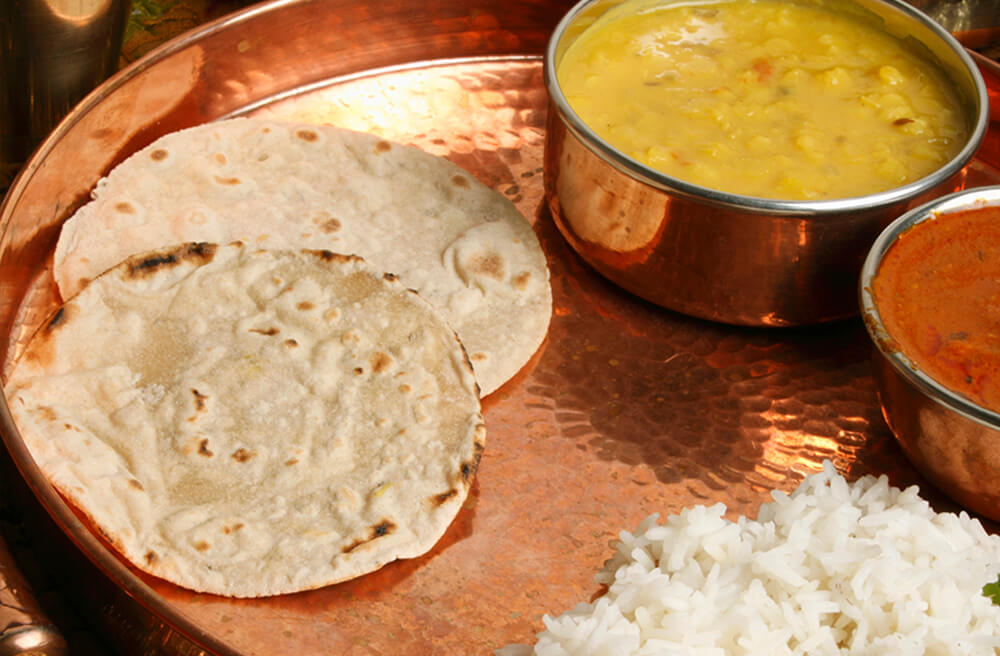
Bhakri, an unleavened traditional Indian flatbread made from flours like bajra (pearl millet), jowar (sorghum), ragi (finger millet), or wheat. Bhakri is thicker and denser than other Indian flatbreads like roti, making a hearty component of a meal. Bhakri is served with curries, vegetables, lentils, and chutneys. Being gluten-free and high in fiber, Bhakri is a nutritious choice.
5. Sabudana Khichdi
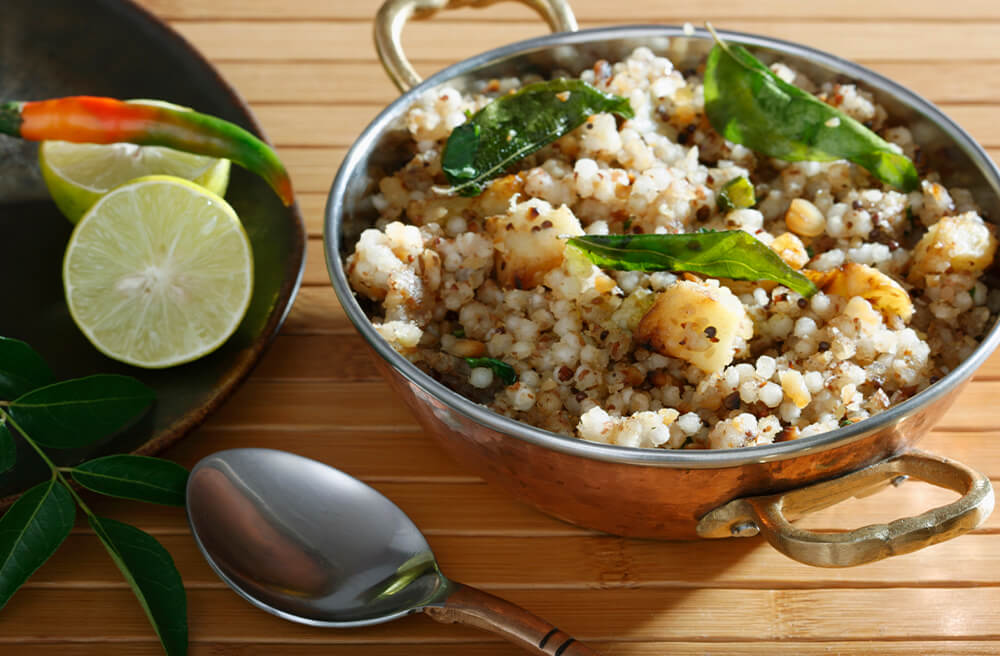
Sabudana Khichdi is a must-have dish for fasting days during Navratri. It is also served for breakfast. Sabudana khichdi has energy-boosting properties which makes it a preferred choice during fasting. It is such a simple dish yet very flavorful. Sabudana also known as tapioca pearls are soaked and set aside.
It is then tempered with cumin seeds, potatoes, peanuts, green chilies, curry leaves, and grated coconut. Lastly, it is seasoned with salt, sugar, and pepper. Sabudana Khichdi is served with plain yogurt.
6. Bombay Duck Fry
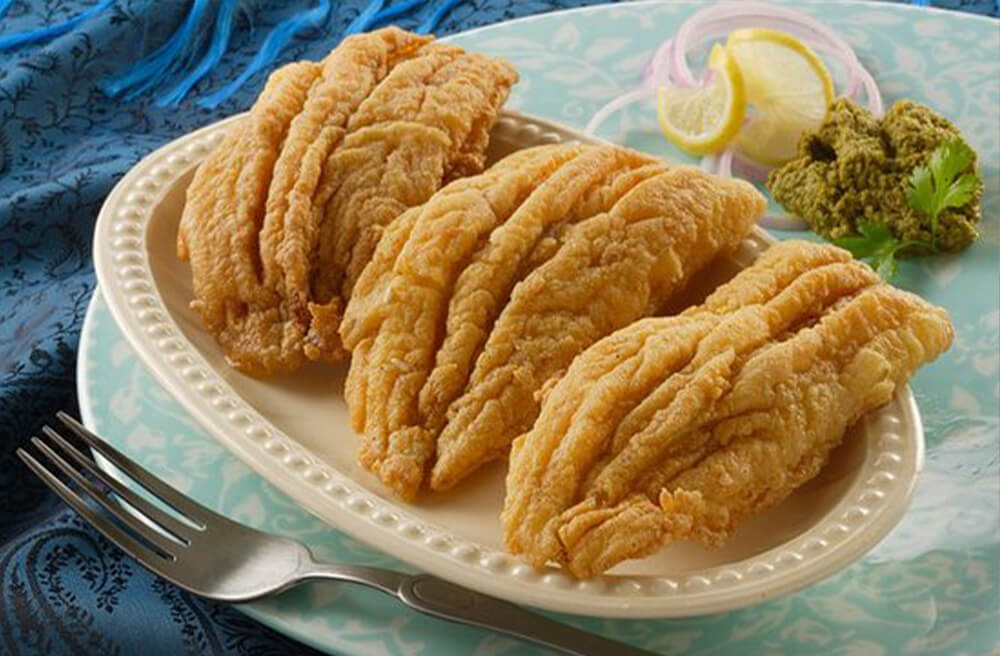
Bombay Duck Fry is also known as Bombil-Fry. Despite the name, it’s not made with duck but with lizardfish that is found along the Konkan coast. The fish is known for its soft, delicate flesh.
The fish is sliced and marinated with ginger garlic, turmeric, red chili powder, and lemon juice. It is then coated in a batter of rice flour or semolina (rava) and deep-fried until the exterior is golden brown. It is garnished with lemon wedges and chopped cilantro and served with chutney. Bombil Fry is best enjoyed fresh and hot, offering a delightful contrast of textures and flavors.
7. Puran Poli
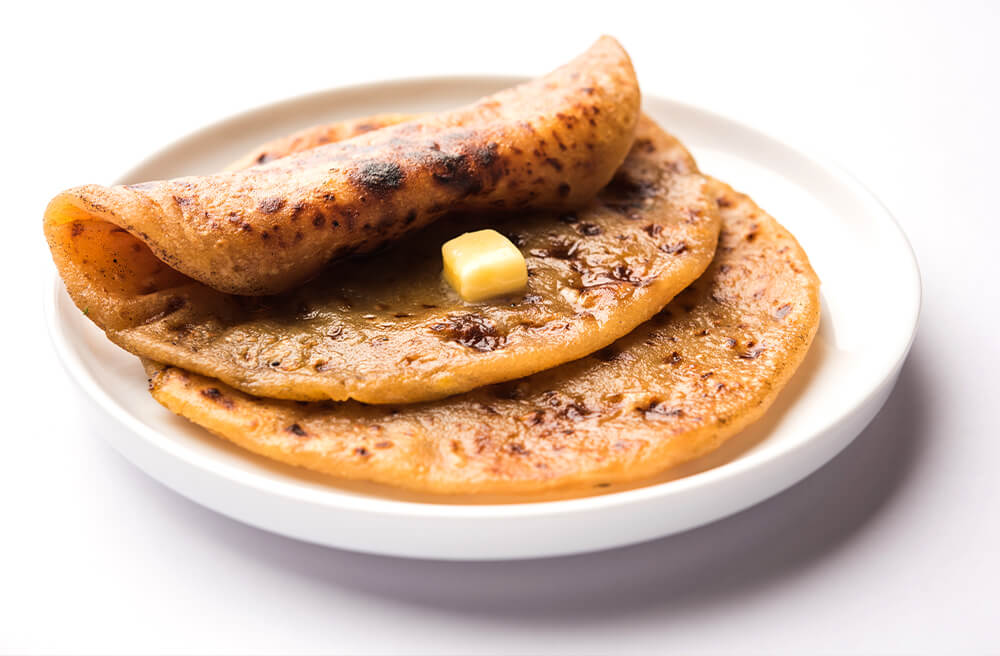
In Marathi, puran refers to “stuffing” and poli refers to “flatbread”. Puran Poli is a traditional Maharashtrian sweet flatbread filled with a mixture of jaggery and gram flour, flavored with cardamom, nutmeg, and saffron. You will always spot Puran Poli during religious festivals like Ganesh Chaturthi, Diwali, and Holi. Puran poli is served with warm ghee and milk.
8. Modak
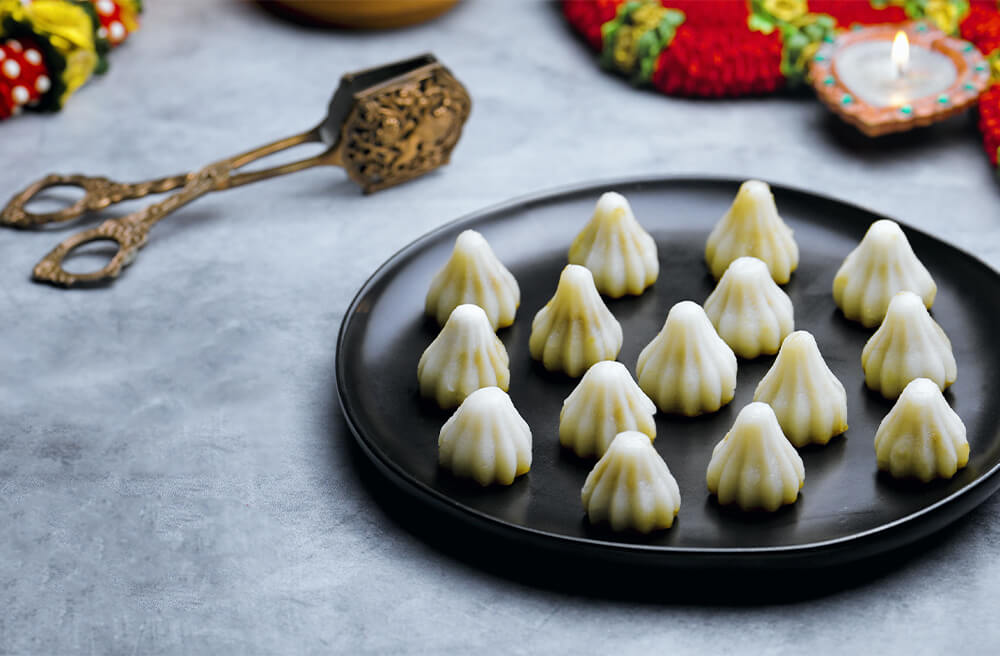
Modak holds great significance during Ganesh Chaturthi. It is known as the favorite sweet of Lord Ganesha and thus given as prasad. This cherished delicacy is prepared in numerous styles, with “Ukadiche Modak” known as steamed Modak being the most popular.
These steamed delights are made with rice flour, ghee, and a symphony of flavors including coconut, jaggery, cardamom, and nutmeg. The taste of Modak is distinctly sweet and indulgent.
Other renowned delicacies from Maharashtra include Ragda Pattice, Misal Pav, Kolhapuri Chicken, Bharli Vangi (stuffed eggplant), and Thalipeeth.
Maharashtrian cuisine showcases the region’s culinary expertise, transforming simple ingredients into delightful culinary creations. Maharashtrian cuisine offers something for every palate. The cuisine invites diners to embark on a gastronomic journey through the state’s rich food culture.